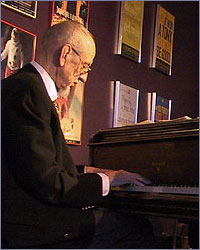 The Syracuse of my youth had something for everyone, especially when it came to music. For whatever reason, even though the city was only about the fourth or fifth largest in the state, it produced a disproportionate number of musicians, many of whom would become working professionals, and a few of whom would go on to leave world-wide footprints.
The Syracuse of my youth had something for everyone, especially when it came to music. For whatever reason, even though the city was only about the fourth or fifth largest in the state, it produced a disproportionate number of musicians, many of whom would become working professionals, and a few of whom would go on to leave world-wide footprints.
Now, these four names may not mean a thing to you (especially if you’ve never set foot in the place), but for my money they represent the four greatest instrumentalists to call the Syracuse area home at some point in the past 40 years – my personal Mount Rushmore, if you will, of the Central New York pop music scene. They are: guitarist Loren Barrigar, (Elbridge), guitarist, Joe Bonamassa (New Hartford), guitarist, Mark Doyle (Auburn), and banjo player Tony Trischka (Syracuse).
 As talented as all the other musicians in town are (or were) – and I say this with more than my share of trepidation, since I still know so many in the local CNY music community – as players, any line simply has to start behind those four guys.
As talented as all the other musicians in town are (or were) – and I say this with more than my share of trepidation, since I still know so many in the local CNY music community – as players, any line simply has to start behind those four guys.
That is a long, round-about way of introducing to you to a guy whose talent is likely a notch below those four, but whose impact on the Central New York music scene can go toe-to-toe with anyone’s.
Phil Klein is a piano player. Phil Klein is an unapologetic jazz nut. Phil Klein is a retired and life-long music teacher who still, to this day, tries to sit down and practice every day. But above all, Phil Klein is my uncle.
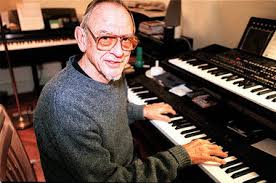 Yet it’s the third of those things – the teaching thing – that set Phil apart from so many of his jazz-playing, jazz-loving contemporaries. Because, Phil didn’t just teach music for nearly six decades at Skaneateles High School and Onondaga Community College, he preached it. In fact, if the love of music had ever been recognized as a disease, I’m quite sure Phil Klein would have been classified a carrier.
Yet it’s the third of those things – the teaching thing – that set Phil apart from so many of his jazz-playing, jazz-loving contemporaries. Because, Phil didn’t just teach music for nearly six decades at Skaneateles High School and Onondaga Community College, he preached it. In fact, if the love of music had ever been recognized as a disease, I’m quite sure Phil Klein would have been classified a carrier.
But until I read a feature on him this week on Syracuse.com, a story that marked his 80th year as a still-viable, still-pushing and still-tuneful keyboard player in his Syracuse retirement home, it never really occurred to me how much Uncle Phil had been (ahem) instrumental in my own development as a music lover.
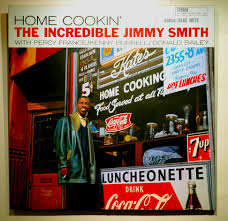 For example, my first job ever was as a production assistant on a new local kids show called Ladybug’s Garden, for which he was musical director. Phil got me the gig, which paid me something like, I don't know, 80 cents an hour. I was 14. And he and I would drive out to the old WNYS studio in Dewitt, where (in between cleaning up goat shit and sweeping floors) I would sit in a big faux tree on the Ladybug set and operate the tiny door that supposedly belonged to an unseen tree-dwelling gnome named Mr. Shamus.
For example, my first job ever was as a production assistant on a new local kids show called Ladybug’s Garden, for which he was musical director. Phil got me the gig, which paid me something like, I don't know, 80 cents an hour. I was 14. And he and I would drive out to the old WNYS studio in Dewitt, where (in between cleaning up goat shit and sweeping floors) I would sit in a big faux tree on the Ladybug set and operate the tiny door that supposedly belonged to an unseen tree-dwelling gnome named Mr. Shamus.
But while sitting in that hollow plaster tree in between Shamus moments, and with little else to do, I would listen to my uncle’s little songlets and bouncy interludes, all of which he composed, and all of which he played with such remarkable delicacy, that I found myself lost in their simple beauty and charm.
Phil was the guy who always had a cool jazz album on the turntable whenever my family and I would come to visit. I first heard Kind of Blue, for example, at Phil's house. And he one day sat my father down and told him to listen to a new LP he’d just bought by organist Jimmy Smith, who he loved. I came along for the ride; you know, just to have a listen. And even at that age, I could tell Jimmy Smith was pretty damn cool.
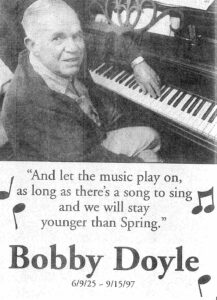 And, sure enough, decades later, while driving down the New Jersey Turnpike and headed home for the holidays, a unexpectedly jazzy version of Jingle Bells featuring a blistering organ came on the radio. I listened to maybe three or four notes and immediately thought to myself, “Oh, I know who that is. That’s Jimmy Smith.” Which, of course, it was. What’s more, a few months later I found myself back home in Manhattan and downstairs at the Iridium Jazz Club on the Upper West Side watching the man live and listening to him tear apart his B3.
And, sure enough, decades later, while driving down the New Jersey Turnpike and headed home for the holidays, a unexpectedly jazzy version of Jingle Bells featuring a blistering organ came on the radio. I listened to maybe three or four notes and immediately thought to myself, “Oh, I know who that is. That’s Jimmy Smith.” Which, of course, it was. What’s more, a few months later I found myself back home in Manhattan and downstairs at the Iridium Jazz Club on the Upper West Side watching the man live and listening to him tear apart his B3.
And speaking of which, Phil’s also the guy who first turned me on to the concept of a jazz club. Not only did he used to have a regular gig at a jazz supper club on North Salina Street called Tubbert’s, that he would constantly talk about and reference in stories, but he and my father took me to my first two clubs ever. I was maybe 8 or 9.
The first was Captain Mac’s Clam Shack on Erie Boulevard, and the second was the Coda, a smoky little hole in the wall on the opposite side of town, near his home on Genesee Street in Fairmount. And it was at the Coda where I saw, for my first and only time, a fabulous jazz keyboardist named Bobby Doyle. Phil knew Bobby well, and in between sets introduced him to my father and me. I would later learn that Phil not only knew Bobby, but also taught Bobby’s son, Mark, at OCC – the same Mark Doyle who now sits squarely on my personal Mount Rushmore of local musicians.
 But Phil taught more young talents than just Mark Doyle. He had as Skaneateles and OCC students two kids who would grow up to become giants of the local Syracuse music scene, singer and saxophonist, Joe Whiting, and R&B keyboardist and musical gypsy, George Rossi.
But Phil taught more young talents than just Mark Doyle. He had as Skaneateles and OCC students two kids who would grow up to become giants of the local Syracuse music scene, singer and saxophonist, Joe Whiting, and R&B keyboardist and musical gypsy, George Rossi.
Another time, we were over at his house and I heard my Uncle Phil tell my father when a Steve Lawrence song happened to come on the radio, “You hear that guy? I’m telling you right now, Big (his pet name for my father), Steve Lawrence is the only singer working today who’s got absolutely perfect pitch. And his wife's pretty damn close.” I had no idea what perfect pitch was, but man, I was impressed. And after that day, I came to not only appreciate perfect pitch, but in time, I eventually came this close to being able to recognize it.
And, last but not least, my uncle Phil was the guy who first turned me onto one of the truly guilty pleasures of my music-loving life, a guilty pleasure that, I’m almost ashamed to admit, exists even today. One Saturday, Phil came by the house to shoot a little pool with dad down in the basement. And as he walked into our kitchen, he handed me an LP still in the plastic. I was eating a bowl of cereal.
He said he wanted me to have it. Told me it wasn’t really his cup of tea, but thought I  might like it. Told me he’d composed a song on it because the kids’ father had asked him.
might like it. Told me he’d composed a song on it because the kids’ father had asked him.
The last name of the “kids” – they were two brothers and a sister from down the Thruway in Delevan, near Buffalo – was Dedrick, and they called their G-rated vocal trio the Free Design. And the music the Free Design played (and in many ways helped shape) was sunshine pop, a brief, billowy, and oh-so-sweet side trip during the psychedelic 60’s by a handful of melody-inspired one-hit wonders.
The world almost lost one of music's unsung heroes a month or so ago. But Uncle Phil dug deep within himself and, with the help of his daughter and my dear cousin, Amy, was able to pull through and start to regain his strength. And now, as I was happy to learn, he’s approaching his 90th birthday with clearer eyes, a reconciled heart, and, most importantly, a new-found fire in his belly.
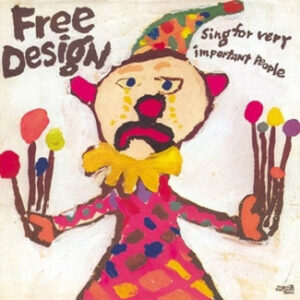 And while history has shown I normally write these tributes about musicians after they’ve passed, this time I get to do something way cooler and far more personal. I get to, as Red Barber might have once said, “give a fella roses while he’s still around to smell ‘em.”
And while history has shown I normally write these tributes about musicians after they’ve passed, this time I get to do something way cooler and far more personal. I get to, as Red Barber might have once said, “give a fella roses while he’s still around to smell ‘em.”
So I dedicate this one to you, Phil. Thank you for everything. Thanks for introducing me to the language of jazz you spoke so openly and freely, both idiomatically and musically. Thanks for your incredible passion for not just teaching music, but spreading the gospel of such silly little concepts as pitch, tone, meter and melody.
But most of all, thank you for all the seeds of possibility you once planted in my young and still-fertile brain. Perhaps without even knowing what you were doing, you gave me one of the greatest gifts any adult ever did. You may not have given me the gift of music, but you damn well gave me to key to it, and then let me do with it what I will.
What's more, you exposed me to just how vast and deep and non-judgmental the definition of what constitutes a great song really is.
 For all those things and others, I owe you a debt that I’m delighted to now say I will never, ever be able to fully repay. I love you, Phil.
For all those things and others, I owe you a debt that I’m delighted to now say I will never, ever be able to fully repay. I love you, Phil.
And to everyone else, please take a moment to enjoy two songs from the Free Design's children’s-themed 1968 release, Free Design...Sing for Very Important People, the LP that my remarkable and unassuming uncle gave me that rainy Saturday morning a lifetime ago.
The first is his very own Children’s Waltz -- a song that, while only nominally a waltz and only nominally for children, is as gentle and full of faith as the man who composed it.
And the second is the cut that a few years ago earned a spot on my Desert Island Jukebox of 1960’s singles, and a song that over the years showed me the extent to which sunshine pop, in the right hands, can be so much more than just another strain of ear candy: Chris Dedrick's remarkable Kites are Fun.
